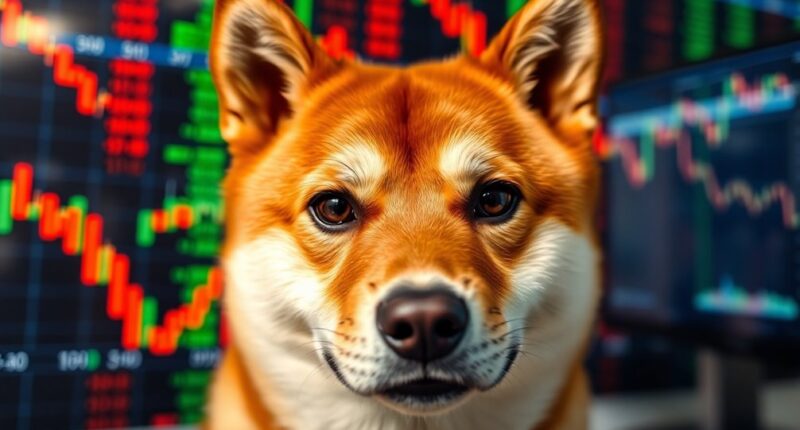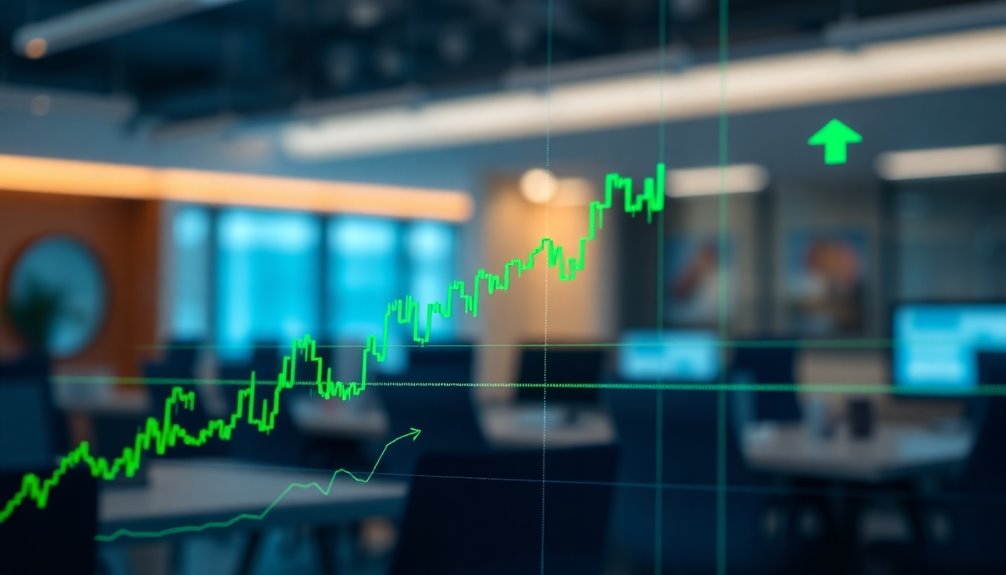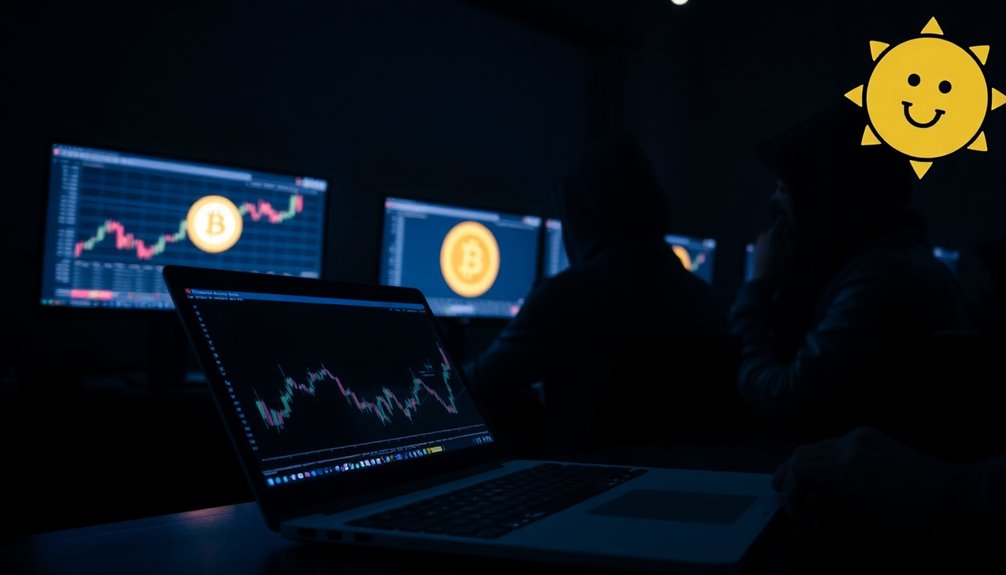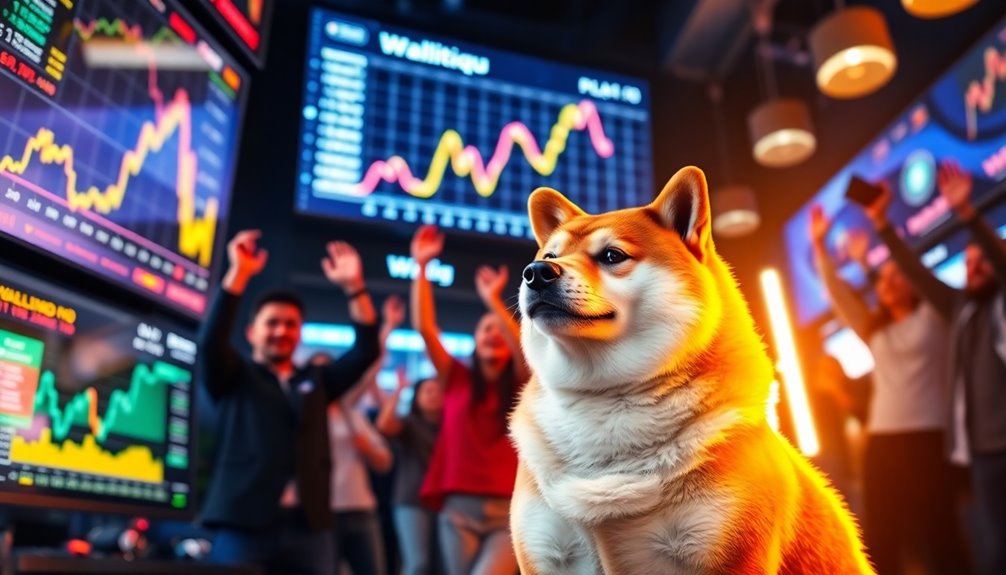Shiba Inu’s price patterns raise significant red flags for you as an investor. While bullish signals like cup and handle formations suggest potential gains, bearish trends and volatility complicate the landscape. The influence of market sentiment, whale activities, and increasing competition from other coins can’t be ignored. Short-term risks, like failing to maintain support levels, could lead to drastic drops. It’s crucial to stay informed on these trends to navigate the uncertainties effectively. More insights await you. Additionally, you should keep an eye on emerging tokens that could offer alternative investment opportunities. For instance, the sosovalue token significant price increase has caught the attention of many investors, indicating a shift in market dynamics. By diversifying your portfolio and monitoring these trends closely, you can better position yourself to capitalize on potential growth while managing risks associated with Shiba Inu and similar cryptocurrencies.
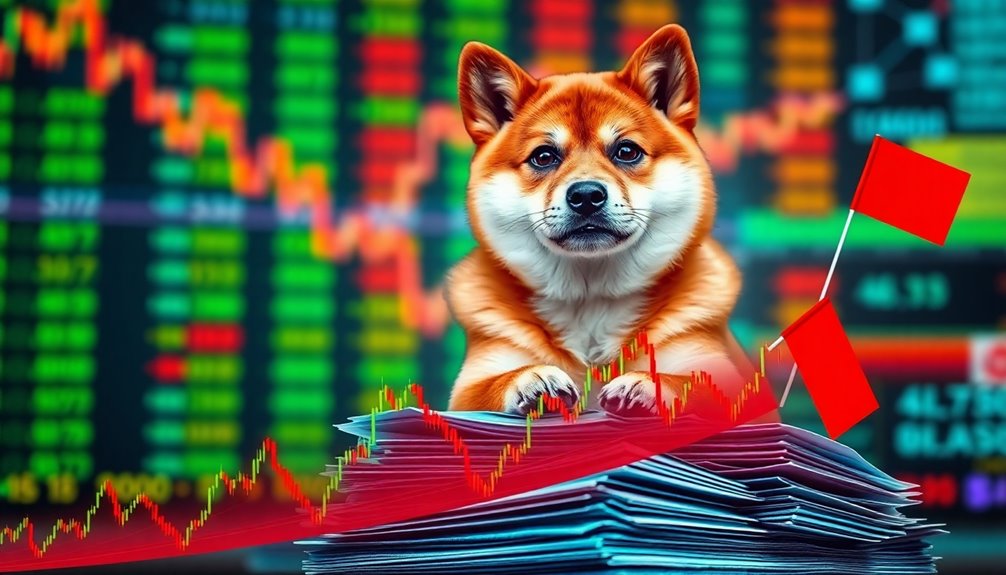
When analyzing Shiba Inu price patterns, you'll find a fascinating blend of bullish and bearish signals that can influence investment decisions. Shiba Inu has shown several bullish patterns, like the cup and handle, bullish pennant, and Elliot Wave pattern, all suggesting a potential for a parabolic breakout. However, it's crucial to remain cautious since these patterns coexist with bearish signals, creating a complex landscape for investors.
The Relative Strength Index (RSI) has recently recovered from oversold levels, hinting at the possibility of further price appreciation. Yet market sentiment plays a pivotal role in Shiba Inu's price movements. Positive news can drive prices up, while negative news can send them spiraling down. This volatility often leaves investors in a precarious position, as they must navigate rapid fluctuations driven by external factors like whale activities, regulatory developments, and competition from emerging coins.
During the period from March to September, Shiba Inu formed a falling wedge pattern, which typically leads to bullish breakouts. The bullish pennant also indicates a strong upward move if the price breaks out of the triangle. However, you shouldn't ignore the possibility of a bearish flag pattern, which suggests a potential continuation of downward momentum. This duality of patterns can create confusion, making it essential to approach investments with a level head.
Market demand and supply significantly impact Shiba Inu's price movements. Large holders, or whales, can manipulate prices through coordinated buying or selling activities, adding to the unpredictability. Furthermore, the lack of real-world utility for Shiba Inu often leads to reliance on hype and social media trends, which can be fleeting. Additionally, the stable futures open interest since November 10 indicates potential market activity that could affect SHIB's price trajectory.
As an investor, it's crucial to recognize that while the long-term projections suggest SHIB could reach $0.030 by 2050, such forecasts are speculative and fraught with risk. Short-term risks loom large, especially if Shiba Inu fails to maintain key support levels, which could lead to drastic price drops.
The investment landscape is rife with uncertainty, and shifts in market sentiment can dramatically alter Shiba Inu's trajectory. As you navigate these patterns and trends, stay informed and consider the inherent risks involved in investing in such a volatile asset. The allure of potential gains is tempting, but remember that volatility can swing both ways, making caution your best ally.
Conclusion
In conclusion, if you're considering investing in Shiba Inu, it's crucial to pay attention to the current price patterns. Red flags are waving, indicating potential volatility and risk. Don't ignore these signs; they could signal trouble ahead for your investment. Always do your research and think carefully before diving in. Remember, staying informed can help you make smarter decisions and protect your financial future. Trust your instincts and approach with caution.
